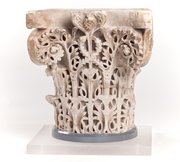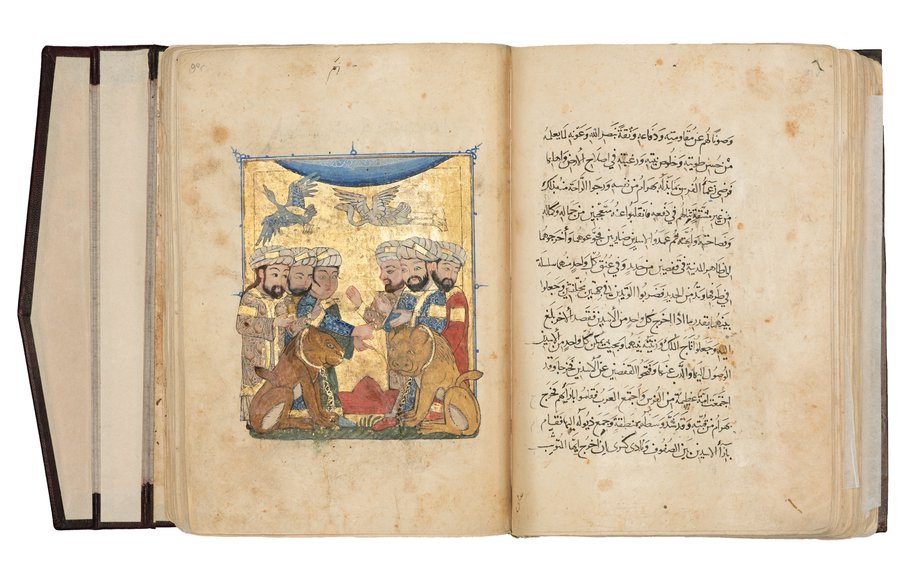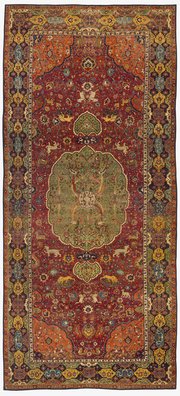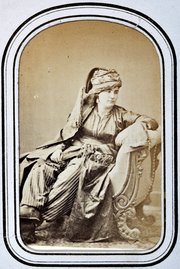
Manuscript of Sulwan Al-Muta'a fi 'Udwan al-Atba' (Consolation of the Prince over the Hostility of his Subjects)
Museum of Islamic Art
- Title:
- Manuscript of Sulwan Al-Muta'a fi 'Udwan al-Atba' (Consolation of the Prince over the Hostility of his Subjects)
- Author:
- Ibn Zafar Al-Siqilli
- Original Author:
- Ibn Zafar Al-Siqilli
- Production place:
- Syria
- Date:
- 1300 - 1400
- Period:
- Mamluk
- Title:
- Manuscript of Sulwan Al-Muta'a fi 'Udwan al-Atba' (Consolation of the Prince over the Hostility of his Subjects)
- Author:
- Ibn Zafar Al-Siqilli
- Original Author:
- Ibn Zafar Al-Siqilli
- Production place:
- Syria
- Date:
- 1300 - 1400
- Period:
- Mamluk
- Material:
- Paper, Ink, Gouache, Gold, Leather
- Technique:
- Bookbinding, Calligraphy, Illustration, Illumination
- Dimensions:
- 25.1 × 19 × 4
This manuscript is a Mamluk copy of the Sulwan Al-Muta‘ fi ‘Udwan al-Atba‘ ("Consolation of the Sovereign during the Hostility of his subjects"), written by Abu ‘Abdallah Muhammad b. Abi Muhammad ibn Zafar al-Siqilli (497-565 AH / 1104- 1170 CE). The text belongs to the medieval literary genre of the "mirror for princes", in which a set of rules and ethics for good governance (adab) are addressed to an ideal sovereign and staged through animal fables and anecdotes with historical figures. The genre appears as early as the 1st century AH / 7th century CE and the most famous of them is the Kalila wa Dimna of Ibn al-Muqaffa‘. Featuring 26 paintings, this manuscript is the only illustrated copy of the text in the medieval period. His cycle of paintings demonstrates the use of pictorial archetypes already established in the 7th-century AH/13th-century CE manuscripts workshops, combining the Mesopotamian tradition, in particular with the representation of human figures and the introduction of Chinese motifs like the lotus flower, and the Byzantine tradition, with the gold background and the image of the sovereign and patron on the frontispiece pages.



